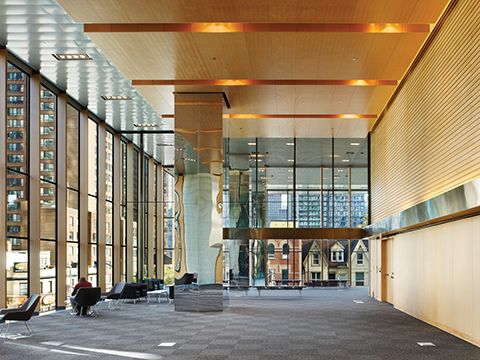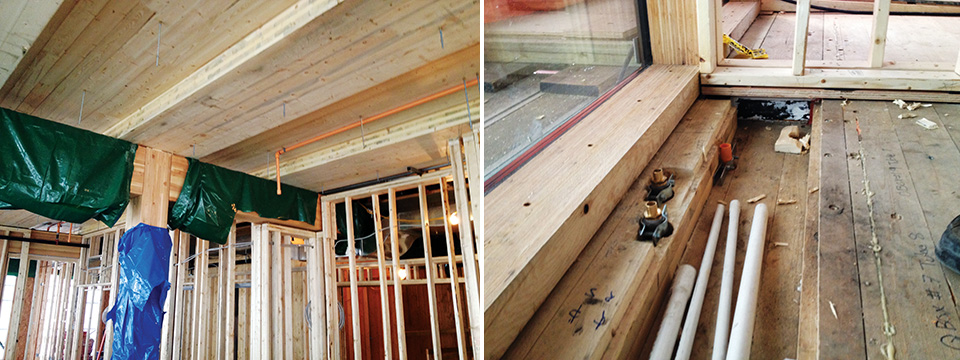Controlling noise issues in wood buildings

Compounding the issue, high STC ratings alone do not always guarantee a problem-free situation. Sound travels not only through the air from one room to another, but also through the walls, floor, and ceiling. The STC tests done in a laboratory do not take into account this flanking noise, so even when high STC partitions are constructed, it is still possible to have problems in the final product.
In wood-framed buildings, lower frequency sounds transfer more easily through walls than in a concrete building. This can be prevented by following some of the strategies outlined in this article. With proper acoustical design, residents can have the same privacy in wood structures as they have come to expect from steel and concrete buildings.
Strategies to minimize sound transmission
The following are some considerations to help minimize sound transmission in wood structures.
Proper stud spacing
Generally speaking, the farther apart studs are, the better the sound reduction—up to 5 dB more in performance. The typical standard for stud spacing in single stud walls is 400 mm (16 in.) on centre (oc); this is measured from the centre of one stud or joist to the centre of the next. However, 610-mm (24-in.) oc spacing is becoming more common and recommended when trying to isolate sound; it can often be a simple modification to the design.
Floor-ceiling assembly design
The same concerns raised about noise transferring through walls also apply to floors. While most noise complaints come from televisions, speakers, or people talking, there are also issues with impact sounds—overhearing people walking on hard surfaces. Soft surfaces (e.g. carpeting) can reduce impact noise by as much as 20 dB, but this is not an option in every unit. Other solutions include a noise barrier ceiling, rubber floor underlay, and a drywall ceiling supported on resilient channel.
Amount and type of insulation in the walls
One of the most cost-effective ways to minimize sound transfer is to include insulation in the walls, namely glass fibre batts. Generally, a minimum of 50 mm (2 in.) of glass fibre batts is sufficient; however, when sound performance is critical, it is best to fill the entire air cavity.
Amount of air space
When dealing with lightweight materials, one must consider the amount of air space between finished wall panels. Increased air space in a floor-ceiling or wall construction can result in noise reduction.
Single or isolated stud wall
In wood-frame construction, one of the most effective ways to prevent noise transfer is using an isolated stud wall. This is two sets of studs in a wall cavity that are not touching each other. As a result, the air space is also increased, which further improves sound isolation.








